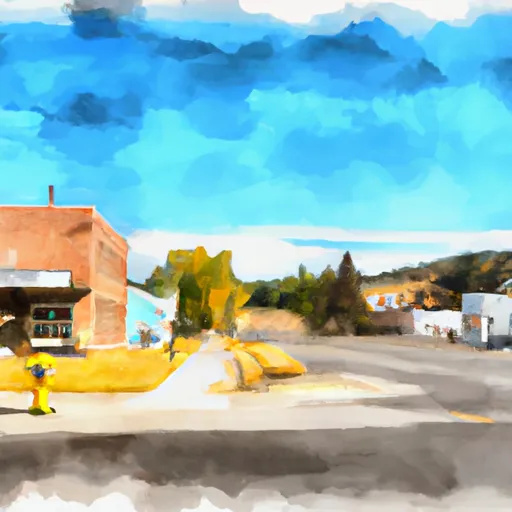-
 Snoflo Premium
Snoflo Premium
Get unlimited access to all our content
With no Ad interruptions! - Start Your Free Trial Login with existing account
Condon
Eden Index
Climate
7.3
•
Recreation
2.8
•
Community
1.7
•
Safeguard
4.3/10

Condon, Montana is a small town located in the northwest part of the state. The climate is cold and snowy in the winter with mild to hot summers. The area is surrounded by forests, lakes, and rivers, making it a popular destination for outdoor recreation. The Swan River, which runs through the town, is a popular spot for fishing and kayaking. Additionally, Condon is located near the Bob Marshall Wilderness Area, offering opportunities for hiking, camping, and wildlife watching. As for hydrology, the Swan River Watershed is home to various constituents, including trout, bull trout, and whitefish. The area is also home to grizzly bears, elk, and other wildlife. Overall, Condon is an ideal location for outdoor enthusiasts looking to immerse themselves in nature.
What is the Eden Index?
The Snoflo Eden Index serves as a comprehensive rating system for regions, evaluating their desirability through a holistic assessment of climate health, outdoor recreation opportunities, and natural disaster risk, acknowledging the profound impact of these factors on livability and well-being.
Climate Health Indicator (CHI): 7.3
Condon receives approximately
534mm of rain per year,
with humidity levels near 64%
and air temperatures averaging around
6°C.
Condon has a plant hardyness factor of
4, meaning
plants and agriculture in this region thrive during a short period during spring and early summer. Most
plants will die off during the colder winter months.
By considering the ideal temperature range, reliable water supplies, clean air, and stable seasonal rain or snowpacks, the Climate Health Indicator (CHI) underscores the significance of a healthy climate as the foundation for quality living.
A healthy climate is paramount for ensuring a high quality of life and livability in a region, fostering both physical well-being and environmental harmony. This can be characterized by ideal temperatures, reliable access to water supplies, clean air, and consistent seasonal rain or snowpacks.
Weather Forecast
Streamflow Conditions
Pend Oreille
Area Rivers
Pend Oreille
Snowpack Depths
Pend Oreille
Reservoir Storage Capacity
Pend Oreille
Groundwater Levels
Recreational Opportunity Index (ROI): 2.8
The Recreational Opportunity Index (ROI) recognizes the value of outdoor recreational options, such as parks, hiking trails, camping sites, and fishing spots, while acknowledging that climate plays a pivotal role in ensuring the comfort and consistency of these experiences.
Access to outdoor recreational opportunities, encompassing activities such as parks, hiking, camping, and fishing, is crucial for overall well-being, and the climate plays a pivotal role in enabling and enhancing these experiences, ensuring that individuals can engage in nature-based activities comfortably and consistently.
Camping Areas
| Campground | Campsites | Reservations | Toilets | Showers | Elevation |
|---|---|---|---|---|---|
| Rainy Lake | 5 | 4,126 ft | |||
| Lake Inez | 5 | 4,073 ft | |||
| Holland Lake | 56 | 4,054 ft | |||
| Lake Alva | 41 | 4,138 ft | |||
| Spotted Bear | 13 | 3,734 ft | |||
| Seeley Lake Complex | 29 | 3,996 ft | |||
| River Point Complex | 26 | 4,017 ft | |||
| Lakeside (Old Alva) | 5 | 4,108 ft | |||
| Swan Lake | 36 | 3,167 ft | |||
| Lindbergh Lake | 22 | 4,392 ft |
Nearby Ski Areas
Catastrophe Safeguard Index (CSI):
The Catastrophe Safeguard Index (CSI) recognizes that natural disaster risk, encompassing floods, fires, hurricanes, and tornadoes, can drastically affect safety and the overall appeal of an area.
The level of natural disaster risk in a region significantly affects safety and the overall livability, with climate change amplifying these risks by potentially increasing the frequency and intensity of events like floods, fires, hurricanes, and tornadoes, thereby posing substantial challenges to community resilience and well-being.
Community Resilience Indicator (CRI): 1.7
The Community Resilience Indicator (CRI) recognizes that education, healthcare, and socioeconomics are crucial to the well-being of a region. The CRI acknowledges the profound impact of these elements on residents' overall quality of life. By evaluating educational resources, healthcare accessibility, and economic inclusivity, the index captures the essential aspects that contribute to a thriving community, fostering resident satisfaction, equity, and social cohesion.

